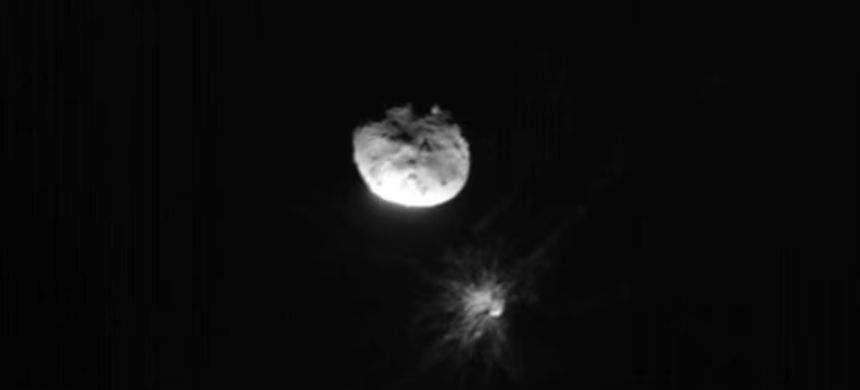NASA’s DART mission provided crucial insights into the nature and history of the binary asteroid system consisting of Didymos and its moonlet Dimorphos. The spacecraft, which impacted Dimorphos on September 26, 2022, has allowed scientists to analyze the asteroids’ formation and composition.
Key findings from the DART mission include:
- Formation and Age: Didymos is estimated to have formed around 12.5 million years ago, while Dimorphos is much younger, forming approximately 300,000 years ago. Didymos likely originated in the main asteroid belt between Mars and Jupiter before being pushed into the inner solar system.
Also Read: Sultana Nasab is Third Pakistani Woman to Reach K2 Summit
- Surface Composition: Both asteroids are “rubble pile” types, consisting of rocky debris held together by gravity. Didymos features a diameter of about 780 meters, while Dimorphos is roughly 170 meters wide. The surface of these asteroids is covered with boulders, with Dimorphos having the largest boulders the size of a school bus and Didymos featuring boulders as large as a soccer field.
- Ejection of Material: The study suggests that Dimorphos was formed from material ejected from Didymos’s equatorial region. This ejection is attributed to Didymos’s faster rotation in the past, driven by the YORP effect, which accelerated its spin due to uneven solar heating.
- Surface Characteristics: Dimorphos has visible cracks on its surface, while Didymos has finer-grained soils at its equator. Overall, both asteroids have surfaces that are much weaker than loose sand.
- Impact and Results: The DART spacecraft struck Dimorphos at approximately 22,530 kph (14,000 mph), successfully altering its trajectory and slightly changing its shape. This mission demonstrated that kinetic force could be used to redirect an asteroid, a technique that could be crucial for planetary defense in the future.
The data gathered by DART has significantly enhanced the understanding of binary asteroid systems, revealing their complex formation and evolution processes. This knowledge contributes to broader asteroid research and the development of potential strategies for mitigating asteroid impacts.











